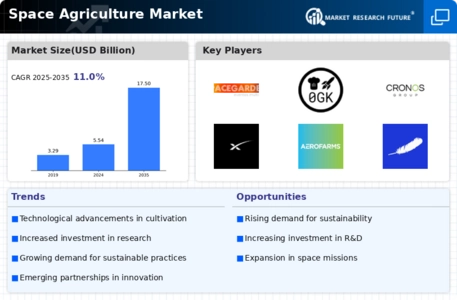Market Share
Space Agriculture Market Share Analysis
In space agriculture market, companies and organizations deploy various market share positioning strategies to establish themselves in this pioneering field. Another important strategy involves technology development, in which firms try to develop novel techniques for growing crops in alien environments. Under this research goal fall the development of advanced hydroponic and aeroponic systems, and artificial intelligence and robotics applied to automate and optimize agricultural operations in space. In order to promote themselves as high-tech sci-tech companies in space agriculture, companies attempt to show off their technological innovations and attract attention from space agencies, research institutions and potential partners. Working together on marketing represents an important part in space agriculture market share. The space farm is a multidisciplinary endeavor, spanning fields as far afield as aerospace engineering and biology, right down to growing season-specific agriculture, factored into all its planning. Through strategic alliances with space agencies, universities and other related companies, firms can cooperate in pooling resources and sharing information. Besides expanding the capabilities of companies in general, these collaborations help to establish industrial standards and norms, which in return, help them gain prominence in the market. Creating education and outreach also functions as an apparatus for trade brand awareness and positioning. Firms that work in space agriculture typically also devote investment in education and public outreach to demonstrate the significance and difficulties of cultivating in space. Highlighting both the public and potential investors about the importance of this space qua, companies hope to build for themselves a reputation as both thought leaders and pioneers in such a new field. It cultivates a favorable public image and thereby helps to attract the talent and resources in the form of funds needed for even more research and development. Diversification of crop portfolios is a strategic response to this. Apart from the traditional leafy greens, space crops which land-bound options include grains, fruits, and staple crops. Companies are therefore seeking to grow space vegetables from with this goal in mind. This diversification helps meet the nutritional needs of astronauts on long missions, allowing companies to position themselves as leading providers of safe space farming technology and services. It also contributes valuable insights into terrestrial agriculture, showcasing the broader applications of their research and technology. Market positioning in space agriculture is also influenced by efforts to address sustainability concerns.










Leave a Comment